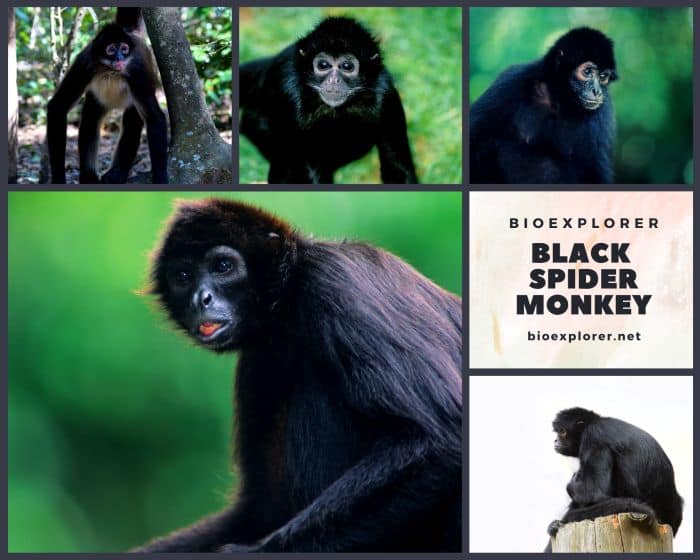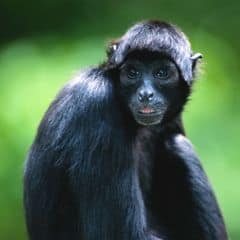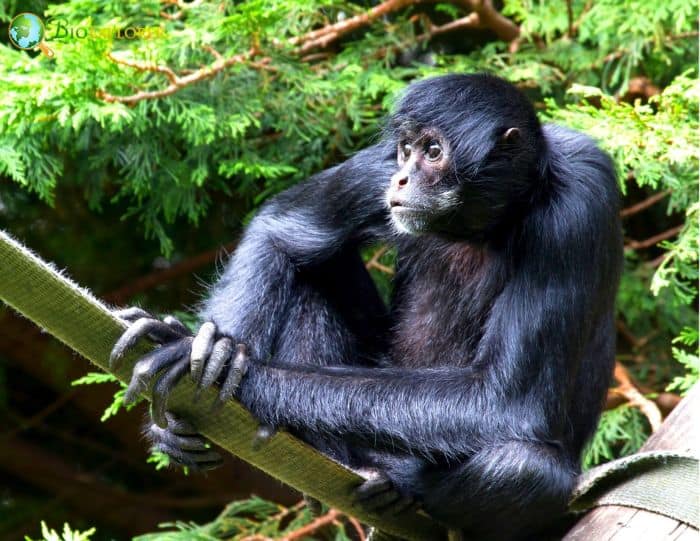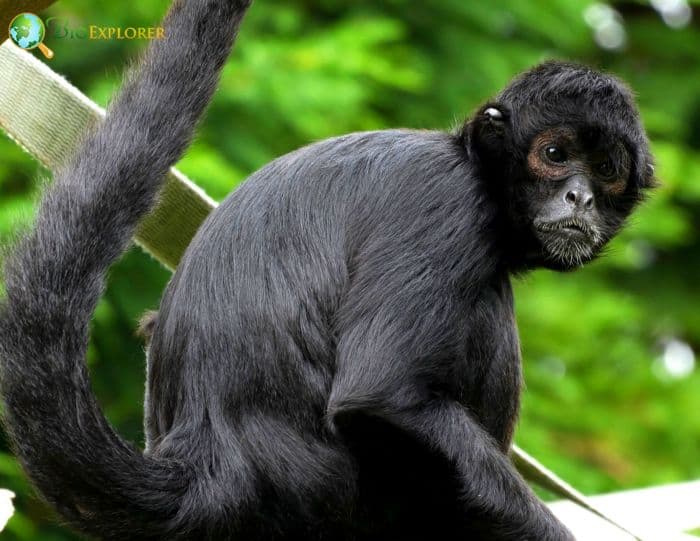
| Animalia | Primates | Atelidae | Ateles | Ateles paniscus |


- Common Name: black spider monkey
- Taxonomy Classification Year: 1758
- Monkey Size: 40 to 60 cm (15.75 to 23.62 in)
- Skin Color(s): Jet-black
- Habitat: Forest, rainforest
- Diet: Herbivorous
- Native Countries: Brazil, French Guiana, Guyana, Peru, Bolivia
black spider monkey Distribution
Black spider monkey Characteristics

Ateles paniscus, the black spider monkey[1], is one of three sub-species of spider monkeys.
- They are found in healthy tropical forests in South and Central America.
- Black spider monkeys show slight variation in appearance, but males are larger than females.
- Both females and males have an average weight of 9.11 kg and 8.44 kg, respectively. They have small heads in relation to their bodies.
- Also, they have long legs and arms and a tail that helps them balance when moving through the treetops.
- Aside from the face, feet, and hands, they are covered in jet-black hair longer than a typical primate.
What Do Black Spider Monkeys Eat?

The black spider monkey preys on[¶]:
- Laurel Espada (Ocotea floribunda).
- Conejo (Protium tenuifolium)
- Hogplum (Spondias mombin)
- Palo De Gallina (Alchorneopsis floribunda).
- Black Manwood (Minquartia guianensis).
- Cuero De Rana (Laetia procera).
- Mata Palos (Ficus amazonica).
- Icecreambean (Inga edulis)
- Trichilia (Trichilia)
- Guiana Brosimum (Brosimum guianense).
- Fourleaf Buchenavia (Buchenavia tetraphylla).
- Maripa Palm (Attalea maripa).
- Jamaican Cherry Fig (Ficus americana).
- Pacae Colorado (Inga alba)
- Wild Balata (Micropholis guyanensis)
- Bulletwood (Manilkara bidentata)
- Inga Grande (Inga alata)
- Urucuri Palm (Attalea phalerata)
Black spider monkey Facts
- Of all the Ateles species, Ateles paniscus is the largest.
- They prefer pristine (mature) rainforests and rarely venture into disturbed habitats, making them particularly vulnerable to forest fragmentation.
- Their prehensile tail allows these primates to find stability when perched on branches, reach out for food at the end of brittle branches when suspended, and as a fifth limb to move around dangerous spots.
- These South-American monkeys spend most of their time in the middle and upper regions of the tree canopy. At night they sleep in groups in the trees for protection.
- Ateles paniscus initiate courtship by playing and wrestling with members of the opposite sex.
Suggested Reading: What Types of Monkeys Are There?
Cite This Page
APA7MLA8Chicago
BioExplorer.net. (2025, May 28). Black Spider Monkey. Bio Explorer. https://www.bioexplorer.net/animals/mammals/monkeys/black-spider-monkey/.
BioExplorer.net. "Black Spider Monkey" Bio Explorer, 28 May 2025, https://www.bioexplorer.net/animals/mammals/monkeys/black-spider-monkey/.
BioExplorer.net. "Black Spider Monkey" Bio Explorer, May 28 2025. https://www.bioexplorer.net/animals/mammals/monkeys/black-spider-monkey/.











